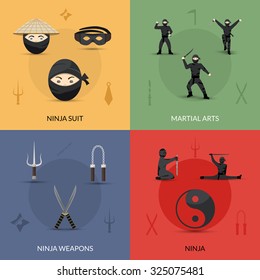The Background And Development Of Martial Arts: From Its Ancient Roots To The Techniques Practiced Today
The Background And Development Of Martial Arts: From Its Ancient Roots To The Techniques Practiced Today
Blog Article
Web Content Author-Bonner Valentine
Enter the globe of martial arts, where ancient origins and contemporary methods collide in an electrifying journey of technique and self-discovery.
As you delve into the background and development of this exciting art type, prepare to be captivated by the cultural impacts, technological innovations, and extensive philosophy that have actually shaped it over centuries.
From the battlefields of old civilizations to the training grounds these days, martial arts have stood the test of time, continuously adapting and expanding.
Each strike, each activity, lugs with it the weight of countless years of tradition and knowledge, passed down via generations. This is a tale of durability, of warriors who sought not only physical expertise, but additionally self-confidence and harmony.
Join mixed martial arts classes for adults near me on this amazing expedition as we uncover the secrets, the tales, and the transformational power of martial arts.
Prepare yourself to be motivated, challenged, and for life altered by the history and advancement of martial arts.
Cultural Impacts on Martial Arts
As you explore the background and development of martial arts, you'll swiftly uncover the remarkable ways in which social influences have formed these combat techniques.
From the old people of China and India to the much more current advancements in Japan and Brazil, martial arts have actually been greatly affected by the societies in which they came from.
For example, Chinese martial arts, such as Kung Fu and Tai Chi, are deeply rooted in the viewpoint of Taoism and the concept of Yin and Yang.
In contrast, Japanese martial arts, like Martial arts and Judo, reflect the samurai warrior practices and the worths of self-control and honor.
Similarly, Brazilian martial art, Capoeira, integrates aspects of African dancing and music, showing the social heritage of African slaves in Brazil.
These cultural influences not just give each martial art its special qualities but also supply a deeper understanding of the historic and social contexts in which they progressed.
Technological Developments and Martial Arts
With the increase of sophisticated weaponry and ingenious training tools, you have actually been able to improve your skills and adjust to the ever-changing battle landscape.
Technological developments have actually revolutionized the method martial arts are practiced and taught. Virtual reality simulations currently enable you to learn reasonable battle situations without the risk of physical injury. High-speed video cameras catch every move, enabling you to analyze and excellent your methods. Wearable tools monitor your heart rate, breathing, and muscular tissue activation, offering instantaneous comments on your performance.
Furthermore, the development of customized equipment, such as resistance bands and agility ladders, has allowed you to boost your speed, toughness, and agility. https://www.cheatsheet.com/entertainment/what-is-bruce-lees-ethnicity-martial-artists-ancestry-is-surprising.html/ have not just made training a lot more effective yet have actually also pushed the borders of what is possible in martial arts, enabling you to reach brand-new elevations in your practice.
The Philosophy and Principles of Martial Arts
The philosophy and principles of martial arts are deeply rooted fit your state of mind and instilling technique, focus, and respect in your technique.
1. State of mind: Martial Arts teaches you to establish a strong and resilient mindset. It enables you to conquer difficulties both on and off the floor covering, pressing your restrictions and persevering when faced with hardship.
2. Technique: Martial Arts needs technique and self-discipline. With regular training and adherence to strict regulations and methods, you learn to manage your impulses and establish a solid work principles.
3. Focus: Martial Arts needs intense emphasis and concentration. By training your mind to be existing in the moment, you improve your ability to respond quickly and properly during fight circumstances.
4. Regard: Martial Arts highlights regard for oneself, instructors, educating partners, and challengers. It instructs you to value the abilities and experiences of others, fostering a feeling of sociability and sportsmanship.
Conclusion
Congratulations on finishing your journey with the exciting world of martial arts! Throughout this expedition, you have seen the abundant history and impressive evolution of these fight techniques.
From their ancient beginnings to the modern techniques we see today, martial arts have actually been formed by cultural influences.
The integration of innovation has also played a substantial role in changing the means martial arts are instructed and practiced in the here and now day.
However, it is necessary to keep in mind that martial arts are greater than simply physical fight. They incorporate extensive approaches and assisting principles that exceed the mere act of battling.
Take a moment to assess this obsolete adventure and appreciate how the tradition of martial arts remains to grow in the present, transcending time and borders.
